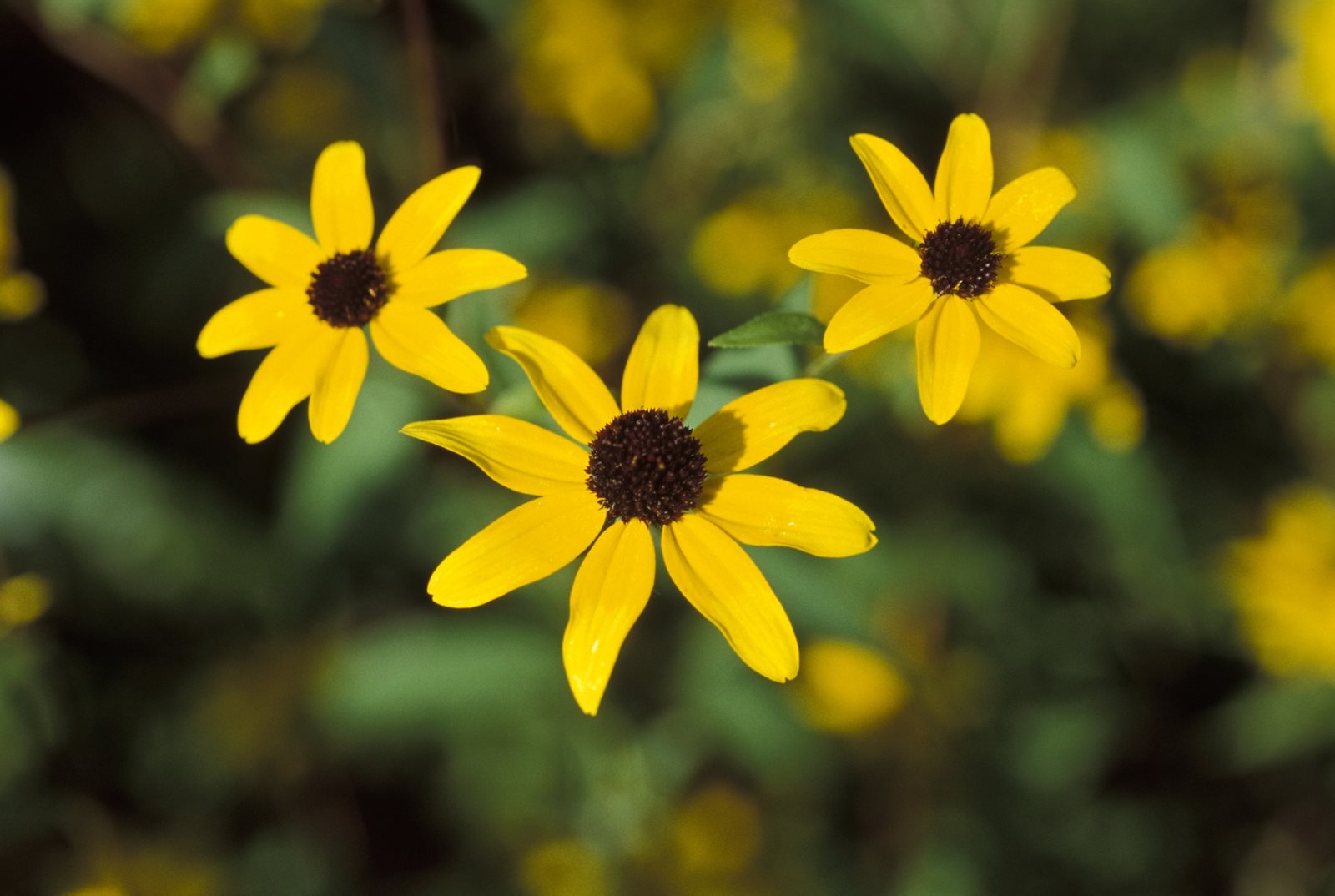Looking for a few nature-focused science activities to do with your students? Because native plants offer a wide range of benefits, including pollinators like insects and birds, the Missouri Department of Conservation always encourages schools to plant native species. “Fast-growing native flower annuals such as plains coreopsis (Coreopsis tinctoria; bloom time: July-August) and black-eyed Susan (Rudbeckia hirta; bloom time: June) are recommended as they can sprout in as little as three weeks,” according to staff at Missouri Wildflower Nursery in Jefferson City.
Because both plants require full sun, these flowers would be ideal for the younger age groups to explore how varying amounts of sunlight and water can affect how plants grow. Start by planting each seed in pots separately and finding different areas to place your plants. Students can observe and analyze the growth as it relates to the amount of sun and the amount of water given. Once your classroom experiment is completed, celebrate learned knowledge by transplanting outside to the perfect schoolyard spot for your coreopsis and black-eyed Susan to bloom. Be sure to talk to your administration and maintenance staff to coordinate where you will plant your flowers. Or, to give your plants greater success with a dependable water routine, allow your students to take their flowers home in pots.
Allowing the flowers to go to seed will give students the opportunity to collect seeds and start the cycle again. Better yet, Kindergarten students can discuss plant growth by planting coreopsis or black-eyed Susan seeds in the spring, and then in the fall when they enter first grade, they can analyze growth changes from seeds to adult plants. As both coreopsis and black-eyed Susan seeds require cold stratification through the winter temperatures to germinate, it is recommended to plant the seeds in late autumn for spring sprouting. Plant seeds at a quarter-inch to a half-inch deep in the soil in November or early December.
The Discover Nature Schools Kindergarten: Bears Through the Seasons and First Grade: Exploring Missouri guides teachers through the process of seed growth and changes through Kindergarten Lesson 4B Sprouting Seedlings and First Grade Unit 8: Parents and Offspring. Kindergarten students analyze the growth of seeds by separating the Seizing Wildflower Lessons with Discover Nature Schools Scattering seeds for the stratification process during the cold months to trigger germination variables of light and water and analyzing how each affects plant development. First grade students identify how adult plants and their offspring are the same and different.
Using trade books as teaching tools to connect ELA with science standards is simple and easy. Not only do the Discover Nature Schools curriculum units offer Read Togethers and Science Notebooks built into the Kindergarten and First Grade student books, but trained teachers also receive trade books in free, MDC-provided teacher kits to support the science content learned. Plants Can’t Sit Still by Rebecca Hirsch colorfully illustrates how seeds can move from one area to another and can cause the environment around it to change. The Dandelion Seed by Joseph Anthony is another classic to discuss the needs of plants, and how they grow and change from seedling to adult. Seize a beautiful sunny day, a tarp or blanket, and head outside to read either of these books to your students and give them the opportunity following the reading to explore the area around them!
There are abundant opportunities to analyze the interactions of different types of pollinators with wildflowers and correlate to structure and function. Virginia bluebells (Mertensia virginica) are a fitting example. With their long drooping flowers, they attract hummingbirds in particular. Why would hummingbirds flock to these types of flowers? What other flowers are hummingbirds attracted to? Is there a pattern? Wild geraniums (Geranium malculatum) have a special method of seed dispersal through catapulting the seeds 10 to 30 feet! Flowers bloom from April to May, so it is recommended to keep the seed pods in a paper sack until all seeds have been released and then sow them immediately. Seedlings emerge again the following March or April. Bring this phenomenon to life with your students and explore seed dispersal as an engineering activity!
Other common native wildflowers to look for include spring beauties (urban landscapes and woodlands; blooms February-April), downy phlox (prairie or open lands; April-May), Virginia bluebells (woodlands; April-May), and cut-leaf toothwort (woodlands; March-May).
For more information, visit Grow Native! At www.grownative.org for resources for ordering, sprouting and maintaining native wildflowers.

